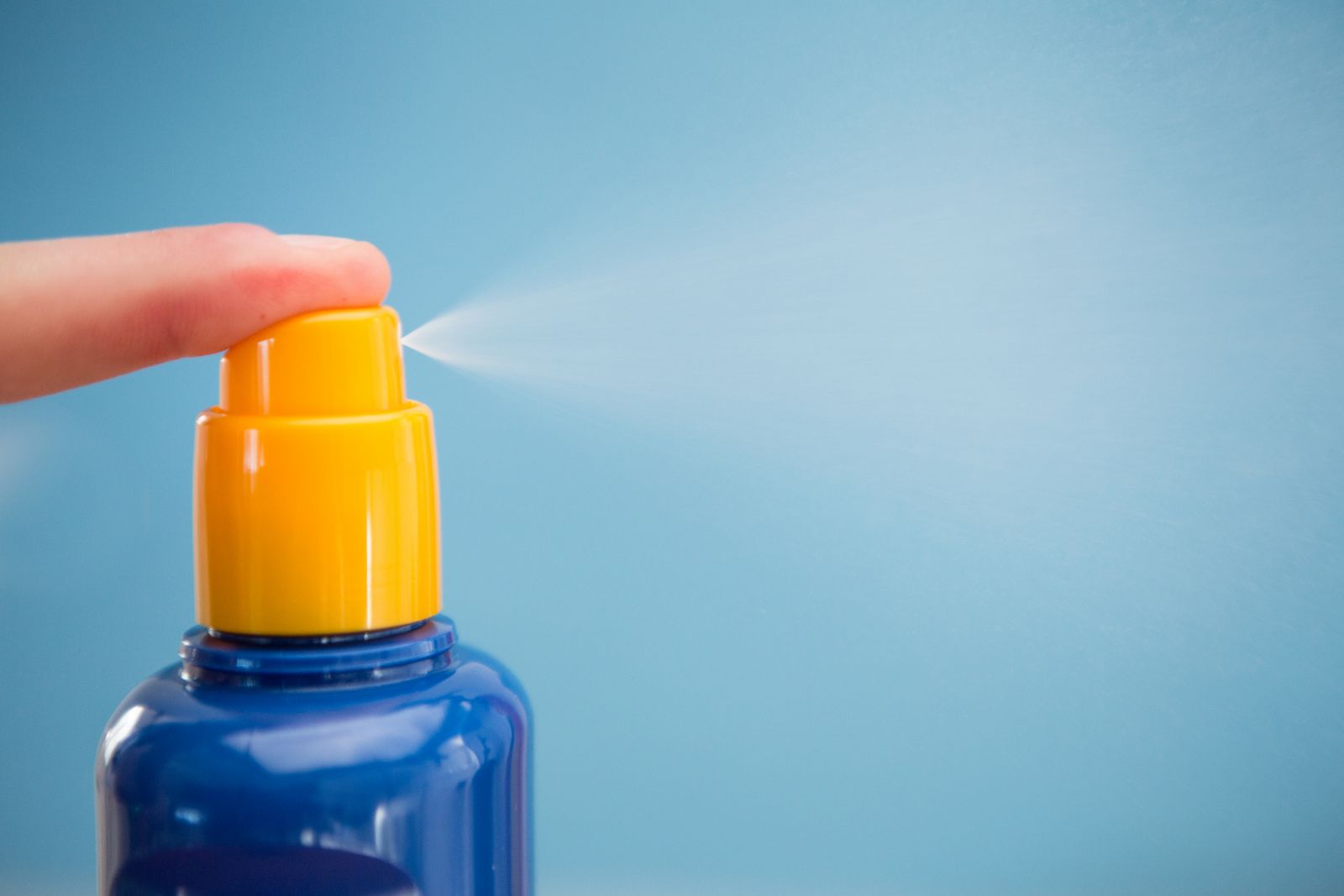Welcome to the DermacenterMD Blog
Posts for tag: dermatology
.jpg) Hello My Friend,
Hello My Friend,
I sit down to write this blog post as I read yet another article about the potential health epidemic tied to the skin. What problem? Vitamin D is the problem. Maybe you have heard of the stir it has caused, and maybe not. According to WebMD, researchers have found low Vitamin D to be a problem in too many Americans. Scientific America reported up to three-quarters of U.S. teens and adults are deficient in Vitamin D, the so called “sunshine vitamin.”
What does this have to do with you and me? Well Vitamin D is a vitamin which uses a conversion process in the skin to make it useful for our body. The conversion process requires sunlight. So, many people have jumped on a bandwagon trying to encourage more sun exposure. The benefits are felt to be elevated Vitamin D levels and a reduction in the possible problems tied to low Vitamin D like cancer, heart disease, infection, and other health problems.
The problem is that skin cancer is also rising at epidemic proportions. In fact, over 3.5 million cases of basal cell or squamous cell carcinoma are diagnosed in the U.S. each year. Some experts estimate as many as 1 in 3 Americans will get skin cancer at some point in their life.
Therefore, we are caught in a dilemma. Should we get more sun or not? The American Academy of Dermatology has made it clear we cannot put ourselves at risk of skin cancer if possible. They provided a position statement to describe their recommendations which includes to continue protecting the skin from the sun and work to get Vitamin D from dietary supplements. Taking oral Vitamin D was felt to be the most important step in getting levels up to normal if they were low.
In short, we should be aware of this ‘hot topic’ as well as our own Vitamin D levels. In addition, we need to make sure we are taking enough daily, and still be aware of the harmful impact the sun can have on the body.
I wish you all much success, peace, and happiness.
Roger Moore, MD
 The low levels of Vitamin D in American today have caused a stir and confusion among health conscious individuals. According to an article published in the Archives of Internal Medicine in 2009 it was reported 23 percent of people in one survey had sufficient Vitamin D levels.
The low levels of Vitamin D in American today have caused a stir and confusion among health conscious individuals. According to an article published in the Archives of Internal Medicine in 2009 it was reported 23 percent of people in one survey had sufficient Vitamin D levels.
Vitamin D insufficiency is typically tied soft and weak bones which is medically termed rickets. There is growing concern that low Vitamin D levels may be tied to heart disease, diabetes, cancer, and other health related problems. Therefore, it is of importance that one maintains an appropriate Vitamin D level. It is also worth being aware that changes in how the blood levels were measured from the 1980s to current day may over dramatize the swing mentioned in the media.
The sun causes an action on the skin which does help the body synthesize Vitamin D. Among dermatologists who regularly recognize and treat skin cancer, this becomes an important topic because there is a significant and unquestionable correlation between sun exposure and skin cancer. Asking patients to get more sun exposure is contributing to an ongoing epidemic in skin cancer, according to many skin cancer experts.
Though there is not a quick and rapid solution, the American Academy of Dermatology recommends patients work to get their Vitamin D levels up through oral supplementation.This means eating foods which have higher levels of Vitamin D such as salmon, tuna, mackerel, and Vitamin D-fortified dairy products, such as milk. In addition, taking supplements with Vitamin D can be helpful.The Institue of Medicine established a Recommended Dietary Allowance (RDA) of 400 IU per day for infants, 600 IU per day for those age one to 70 and 800 IU per day for age 71 and older. It is also worth noting that too much Vitamin D can be a problem as well, so for people age nine and older individuals should not take more than 4000 IU.
The topic is one of debate and will continue to be an important area for health concerns in the future.
Sources:
>Scientific America - Vitamin D deficiency soars in the U.S., study says New research suggests that most Americans are lacking a crucial vitamin. March 23, 2009 |By Jordan Lite
>Americans Low on Vitamin D By Jennifer Warner, Reviewed by Elizabeth Klodas, MD, FACC on March 25, 2009
>Let's not call it the sunshine vitamin Public talking about vitamin D as IOM and AAD issue new recommendations By Jan Bowers, contributing writer, May 02, 2011
 Many topical acne treatments have the potential to be drying to the skin. Add in dry, cold winter weather and sometimes the regimen you were using in warmer weather is suddenly causing your skin to be red and dry. The following guidelines are recommended year-round for acne treatments, but are especially important during these winter months to keep your acne treatment on track without causing irritation.
Many topical acne treatments have the potential to be drying to the skin. Add in dry, cold winter weather and sometimes the regimen you were using in warmer weather is suddenly causing your skin to be red and dry. The following guidelines are recommended year-round for acne treatments, but are especially important during these winter months to keep your acne treatment on track without causing irritation.
- WAIT –Wait at least 30 minutes after washing your face before applying your medication
When there is increased moisture in the skin, the amount of product absorbed by your skin increases. In the case of some treatments (such as those used for rashes) this helps the medication work better. However, in the case of many acne medications, this increases the likelihood that you will experience irritation. Also considering swapping your face wash in winter months . If you have sensitive skin, a gentle skin cleanser such as cetaphil or cerave will get your skin clean while minimizing irritation.
- APPLY – Apply a very thin layer of medication to the affected area.
More is not better –in fact, too much product will be more irritating and could delay improvement. For the entire face, you should use no more than a pea-sized amount of product, taking care to avoid the eye area and folds around the nose and mouth.
- MOISTURIZE- If you are experiencing dryness, use a lightweight moisturizer .
Even acne prone skin sometimes needs help in the moisture department. A moisturizer that is formulated not to clog pores can really help keep your skin in good condition while treating acne. Look for moisturizers that state “non-comedogenic” or “non-acnegenic.” Cerave and Cetaphil are two brands that make lotions that would be excellent for acne-prone skin. In some cases, applying a moisturizer before applying the topical will help make an acne medication more tolerable, others find it more helpful to apply after applying the medication or use the following morning.
- MODIFY- If your regimen is too drying to use daily, modify how you are applying your treatments
If you are getting too dry, it is best to hold on your acne topical and use a moisturizer only until the irritation resolves. When you resume treatment, try modifying how often you are using the medication. Start with every other day, or treat for 2 days and hold for one day to see if this is better tolerated. As stated above, sometimes applying a moisturizer first will also help make a product more tolerable during dry, cold weather. Some products can be used as short contact therapy (also called “SCT”) where the product is used as a mask – apply to clean skin, leave on for 5-10 minutes, rinse with warm water and then apply a moisturizer. Short contact therapy provides a way to deliver a small amount of medication to the skin.
- CALL – Most importantly, if you are experiencing an adverse reaction to your treatment, give us a call.
At DermacenterMD, we want your treatment to help your acne, not cause another problem for your skin. If you are experiencing an adverse reaction, we will work with you to help you figure out what modifications can be made to make your regimen work.
 If you’re considering having a cosmetic procedure done to enhance your natural beauty and reduce the signs of aging, your first reaction may be to contact a plastic surgeon’s office or perhaps go to your local spa. While these places can provide excellent treatment, there is no better option than having a board-certified dermatologist perform your cosmetic procedure. Here at DermacenterMD, Dr. Roger Moore, a skin care expert, will personally evaluate your needs and perform your procedure.
If you’re considering having a cosmetic procedure done to enhance your natural beauty and reduce the signs of aging, your first reaction may be to contact a plastic surgeon’s office or perhaps go to your local spa. While these places can provide excellent treatment, there is no better option than having a board-certified dermatologist perform your cosmetic procedure. Here at DermacenterMD, Dr. Roger Moore, a skin care expert, will personally evaluate your needs and perform your procedure.
There is no other medical profession that is more highly trained in the skin than dermatology. A dermatologist has dedicated their life to the study and care of the skin, hair and nails. When you come in for a consultation with Dr. Moore, you will not only be able to express your desire for a specific cosmetic procedure, but also you can express any other skin, cosmetic or aging concerns you may have. Dr. Moore can lead you in the right direction to get your skin looking youthful, fresh and beautiful.
You can change your image and the way people perceive you thought the innovative cosmetic procedures offered here at DermacenterMD. Dr. Moore offers treatments such as Botox and Dysport, fillers, laser facial rejuvenation, photo rejuvenation, laser hair reduction, microdermabrasion, ProFractional laser therapy, laser vein therapy and more. Many of Dr. Moore’s patients travel from all over the Michiana area, including South Bend, Goshen, Mishawaka and Michigan to receive the professional and expert care they know they will receive at DermacenterMD. So, if you’re considering cosmetic procedures to improve your appearance there is no better option than choosing a board-certified skin expert like Dr. Roger Moore.
We welcome you to give our office a call at 574-522-0265 to schedule your consultation today.
When Sunscreen Safety is Called Into Question
The Skin Cancer Foundation
Source: www.skincancer.org
For years, dermatologists have told us sunscreen protects skin. Now, many people are questioning that advice after an environmental group challenged the safety of many popular brands.
"Patients are confused," said Dr. Darrell S. Rigel, a clinical professor of dermatology at New York University who is a skin cancer researcher. "I've had patients come in and ask, 'Am I harming myself by using it?' I've spent a lot of time talking to people about it."
The latest report comes from the Environmental Working Group, which claims that in an investigation of nearly 1,000 sunscreen products, four out of five offer inadequate protection from the sun or contain ingredients that may pose a health risk.
But dermatologists who reviewed the group's research say the biggest problem is that it lacks scientific rigor. In particular, they are critical of a sunscreen rating system that they say is arbitrary and without basis in any accepted scientific standard.
"What they are doing is developing their own system for evaluating things," said Dr. Warwick L. Morison, professor of dermatology at Johns Hopkins and chairman of the Skin Cancer Foundation's photobiology committee, which tests sunscreens for safety and effectiveness. "Using this scale to say a sunscreen offers good protection or bad protection is junk science."
Dr. Morison has no financial ties to sunscreen makers, and his work with the Skin Cancer Foundation is unpaid. Sonya Lunder, a senior analyst with the Environmental Working Group, said the database and rating system were based on an extensive review of the medical literature on sunscreens. Of nearly 1,000 sunscreens reviewed, the group recommends only 143 brands. Most are lesser-known brands with titanium and zinc, which are effective blockers of ultraviolet radiation. But they are less popular with consumers because they can leave a white residue.
The group is especially concerned about the safety of a compound called oxybenzone, which is used in most popular sunscreens. But the research on oxybenzone is limited.
Most recently, the Centers for Disease Control and Prevention analyzed 2,517 urine samples collected in 2003-4 from a representative sample of the population over age 6 as part of a national health and nutrition survey. The analysis, published this month in the journal Environmental Health Perspectives, found oxybenzone in 97 percent of the samples.
The study goes on to note that human exposure to oxybenzone "has not been associated with adverse health effects" and that sunscreen is an important tool to protect against sunburn and skin cancer. But the researchers said further study was needed to determine whether the chemical had any meaningful effect on the body.
"What's the meaning of it?" said Dr. Rigel, who has consulted for sunscreen makers. "Nobody's seen any problems from years of these agents being used. To call it dangerous is misleading."
A few animal studies have raised concerns that oxybenzone could disrupt endocrine functions. Several researchers say that this is a theoretical concern and that no such effect has been shown in humans.
Another study, published two years ago in Free Radical Biology and Medicine, raised troubling concerns about what happens when sunscreen is absorbed into the skin and reacts with the sun. The report suggested that under certain conditions, sunscreens with oxybenzone and other ultraviolet filters could lead to free-radical damage to the skin, a process that in theory could lead to skin cancer. The study used laboratory models of skin, so some researchers say it is not a reliable indicator of what happens in people.
But the authors noted that the damage occurred only when ultraviolet light reached sunscreen that had penetrated the skin. The solution, they say, is to keep applying sunscreen to block out the UV rays. "It may seem counterintuitive, but by reapplying sunscreen we protect ourselves from the UV light reaching any of the UV-filters that may have penetrated to the skin," said Kerry M. Hanson, the lead author of the report and a senior research scientist at the University of California, Riverside. "At this point, I don't think there's enough evidence to firmly claim that sunscreens containing oxybenzone are unsafe."
Still, Dr. Hanson added that the UV filters used in sunscreens needed testing "to give us a better understanding of how these molecules behave in the skin."
One solution, she said, may be to add antioxidants to sunscreen to counter the effect. She said she had consulted with sunscreen makers on the issue.??
The Food and Drug Administration is preparing rules that will give consumers more information on the label about the sunscreens they buy. Most doctors still recommend sunscreens with a high SPF number and a combination of avobenzone and oxybenzone, ingredients that protect the skin from two types of ultraviolet rays, UVA and UVB.
Avobenzone, also called Parsol 1789, can degrade quickly in the sun. But many top brands, including Johnson & Johnson's Neutrogena with Helioplex, Aveeno with Active Photobarrier Complex and several Coppertone brands, are formulated to prevent that. L'Oreal products containing the new ingredient Mexoryl also offer broad-spectrum protection, doctors say.
It is important to keep in mind that sunscreen is only one way to protect the skin. Not only do people typically not use enough sunscreen, but they don't take other steps to protect themselves from the harmful effects of the sun.
"People focus so much on sunscreens," Dr. Morison said. "It should be a package of protection. A hat, staying out of the sun, avoiding the hottest part of the day and covering up are all part of the whole story. It's not just the sunscreen."
Archive:
Tags
- dry skin (2)
- moisturizer (1)
- sensitive skin (3)
- PA (2)
- Skincare (2)
- skin cancer (29)
- cancer (6)
- facts (1)
- skin (19)
- dermatology (22)
- skin care (19)
- cosmetic (2)
- wrinkles (1)
- Botox (4)
- Dysport (3)
- sleep (1)
- look good (1)
- daily routine (1)
- healthy lifestyle (1)
- doctor (2)
- patient (1)
- sun protection (5)
- sunscreen (14)
- aging dermatology (1)
- providers (1)
- tanning (2)
- sun (6)
- UVA rays (2)
- UVB rays (2)
- melanoma (10)
- Acne (2)
- Treatment (2)
- sunscren (1)
- sun exposure (5)
- Melanoma Monday (2)
- Skin Cancer Awareness Month (1)
- education (2)
- skin cancer specialist (1)
- basal cell carcinoma (1)
- squamous cell carcinoma (1)
- ingredients (2)
- improve your smile (1)
- cosmetics (1)
- laser (1)
- fillers (2)
- sunburn (3)
- avoid the sun (1)
- hat (1)
- sun clothing (1)
- SPF (1)
- Rosacea (3)
- NP (1)
- Nurse Practitioner (1)
- mid-level provider (1)
- physician (1)
- dermatologist (6)
- cosmetic dermatology (4)
- anti-aging (2)
- youthful looks (1)
- Eczema (2)
- rash (2)
- itch (1)
- the rash that itches (1)
- reduce itch (1)
- itching (1)
- getting along with others (1)
- basal cell (2)
- squamous cell (2)
- detection (1)
- Mohs surgery (2)
- photoaging (1)
- Inspiring (1)
- word of the day (1)
- inspiration (3)
- uplifting (1)
- protection (4)
- lips (1)
- reduce wrinkles (1)
- look younger (1)
- encouragement (1)
- never give up (1)
- you can do it (1)
- medical school (1)
- dreams (1)
- brown spots (1)
- moles (2)
- liver spots (1)
- age spots (1)
- Abe Lincoln (1)
- life lessons (1)
- lip cancer (1)
- health (12)
- motivation (1)
- work (1)
- people (2)
- home life (1)
- lifestyle (1)
- ABCDEs of Melanoma (1)
- mole (1)
- skin check (2)
- skin facts (2)
- odd (1)
- fun (1)
- interesting (1)
- lung cancer (1)
- disease (1)
- Christmas (2)
- gifts (1)
- sun burn (1)
- winter skin tips (1)
- itchy skin (1)
- winter skin (1)
- myths (1)
- myth busted (1)
- skin protection (1)
- sunscreen safety (1)
- specialist (1)
- red skin (1)
- irritation (1)
- feel good (1)
- helping (1)
- help (1)
- helping others (1)
- treatment options (1)
- skin health (9)
- Vitamin D (2)
- tanning beds (1)
- skin health. dermatology (1)
- sunshine (1)
- awareness (1)
- prevention (1)
- sun damage (3)
- connections (1)
- working together (1)
- health care (1)
- biotin (1)
- medical (1)
- aging (1)
- elkhart (1)
- Roger Moore (1)
- check (1)
- skin type (1)
- skin cancer prevention (1)
- gift guide (1)
- Christmas gift guide (1)
- Dr. Roger Moore (1)
- holidays (1)
- family history (1)
